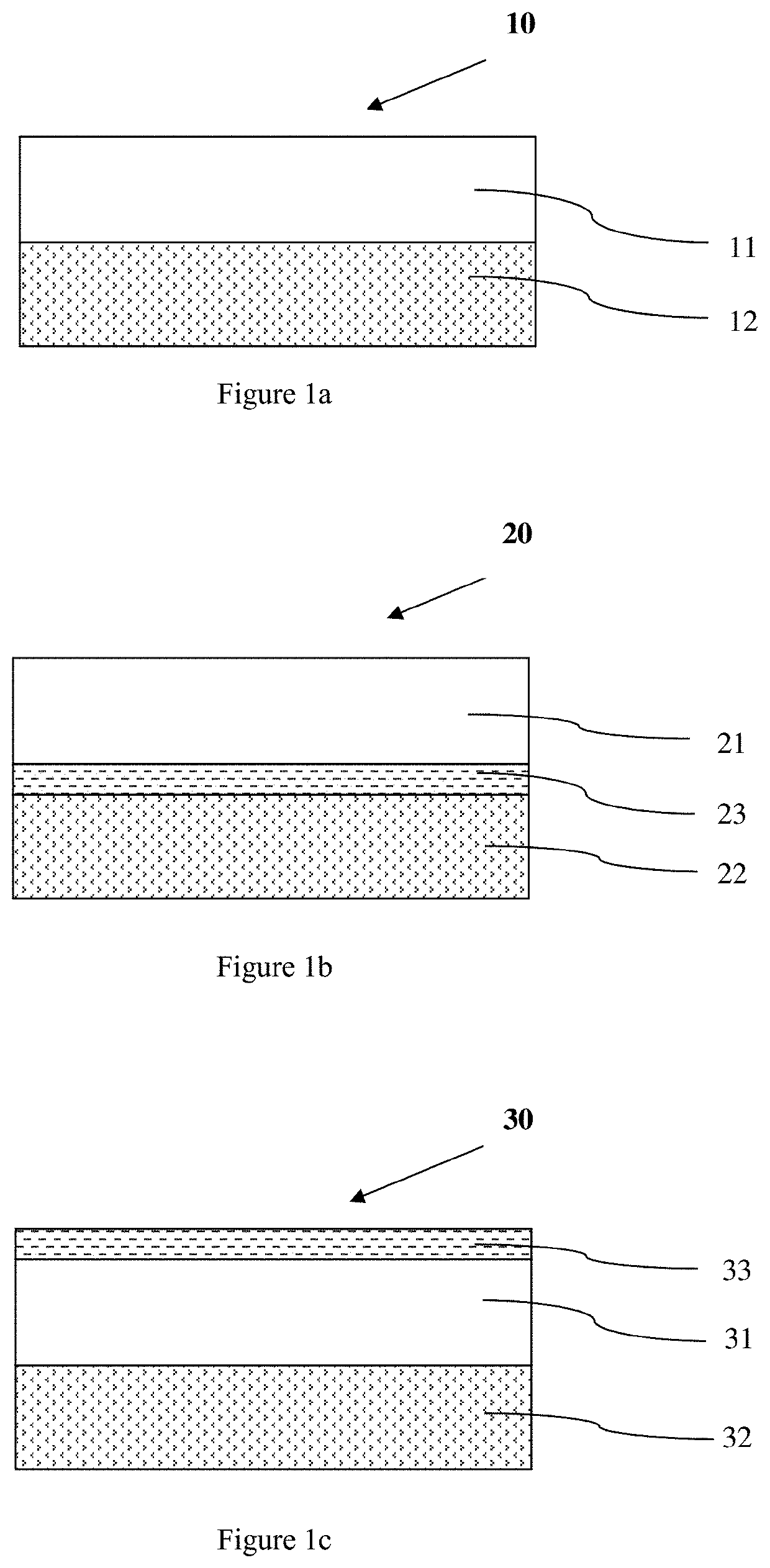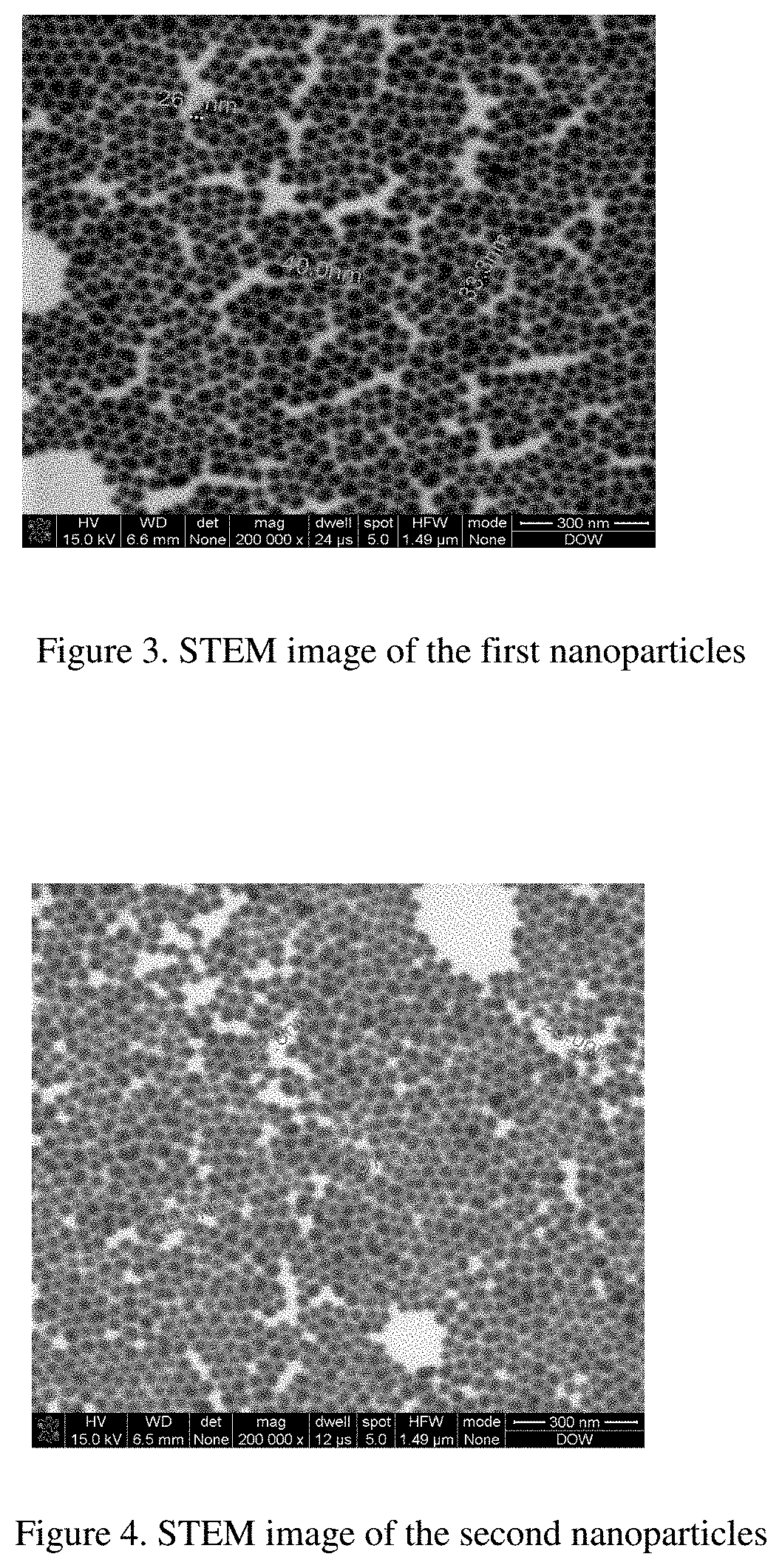Light emitting apparatus and electronic device comprising the same
- Summary
- Abstract
- Description
- Claims
- Application Information
AI Technical Summary
Benefits of technology
Problems solved by technology
Method used
Image
Examples
example 1
[0116]150 mg of the first nanoparticles obtained above were dissolved into 1 g of propylene glycol monomethyl ether acetate (PGMEA) to form a clear solution. The solution was then homogeneously mixed with 3 g of PMMA solution (30 wt % in PGMEA), coated onto a polyethylene terephthalate (PET) film, and then dried in an oven at 80° C. for 2 hours to evaporate PGMEA solvent. No barrier film or any tricks that would improve the barrier properties of the obtained first nanoparticles-PMMA film was used. The thickness of the dried film was around 80-100 μm. Storage stability and photostability properties of the first nanoparticles-PMMA film were determined according to the test method below.
[0117]Storage Stability
[0118]The storage stability test was conducted via the following steps: 1) Cut each nanoparticles-PMMA film sample into 4 pieces and place them in a humidity chamber; 2) Set the chamber at 90% of relative humidity (RH) and 60° C.; and 3) Every 100 hours, a sample piece was taken o...
example 2
[0121]The second nanoparticles-PMMA film was prepared according to the same procedure as described above for preparing the first nanoparticles-PMMA film of Example 1. Photostability of the second nanoparticles-PMMA film was evaluated according to the test method described above in Example 1.
[0122]Storage stability of the first nanoparticles-PMMA film (Example 1) was evaluated according to the test described above. It shows that 73% of the initial emission intensity of the first nanoparticles-PMMA film was maintained after 406 hour storage at 60° C. and 90% RH.
[0123]Table 2 gives photostability properties of films of Examples 1 and 2. As shown in Table 2, the first nanoparticles-PMMA and the second nanoparticles-PMMA films showed good photostability with about 82% and 100% retention of initial light intensity after 273 hours and 352 hours irradiation by blue backlight, respectively.
TABLE 2Photostability of nanoparticles-PMMA filmsunder blue backlight irradiationIrradiation% of initia...
example 3
[0124]150 mg of the first nanoparticles obtained above was dissolved into 1.2 g of PGMEA to form a clear solution. The solution was then homogeneously mixed with a photoresist binder developed for traditional color filters (Sample A acrylic binder (30 wt % in PGMEA), available from Showa Denko) and 9 mg of a photo initiator OXE-02. After thorough mixing, the mixture was coated onto a glass substrate via spin coating and then pre-baked in an oven at 100° C. for 2 minutes. The resulted film was irradiated under 365 nm UV with an intensity of 50 mJ / cm2, followed by baking at 230° C. for 30 minutes twice. The photoluminescence spectrum of the sample was recorded before and after each step with spectrofluorometer (HORIBA FluoroMax-4). Stability of the first nanoparticles under UV curing and hard-baking conditions is given in Table 3.
[0125]Table 3 shows the stability performance of first nanoparticles in the acrylic binder towards the UV curing and hard-baking conditions commonly used for...
PUM
 Login to View More
Login to View More Abstract
Description
Claims
Application Information
 Login to View More
Login to View More - R&D
- Intellectual Property
- Life Sciences
- Materials
- Tech Scout
- Unparalleled Data Quality
- Higher Quality Content
- 60% Fewer Hallucinations
Browse by: Latest US Patents, China's latest patents, Technical Efficacy Thesaurus, Application Domain, Technology Topic, Popular Technical Reports.
© 2025 PatSnap. All rights reserved.Legal|Privacy policy|Modern Slavery Act Transparency Statement|Sitemap|About US| Contact US: help@patsnap.com



